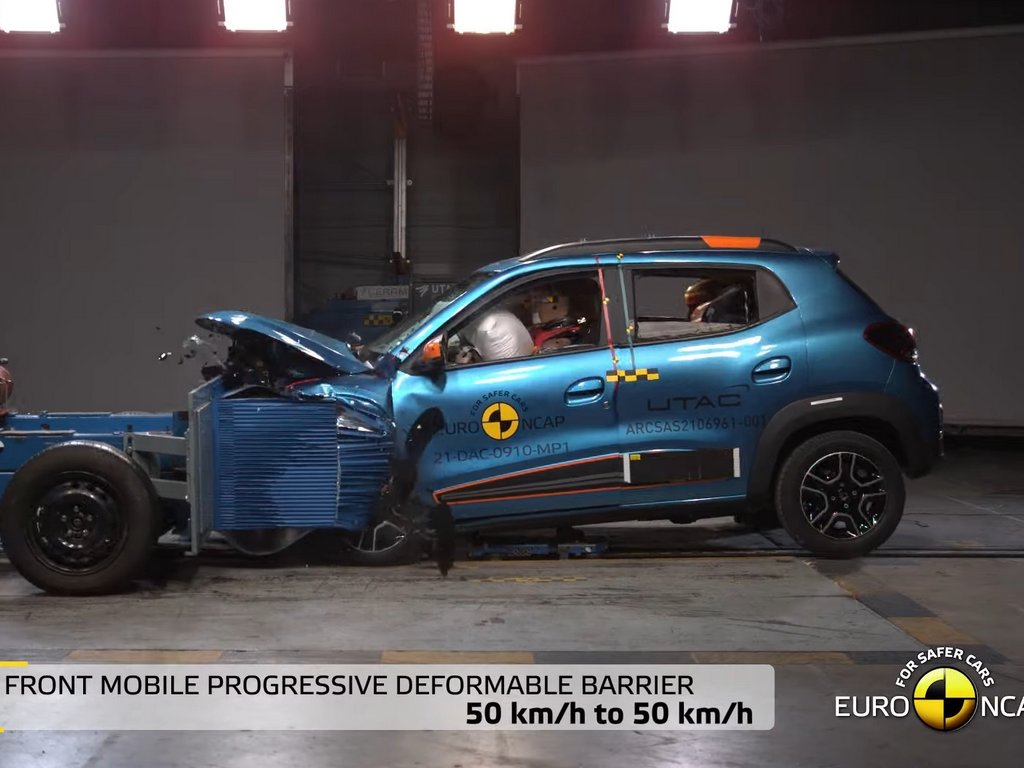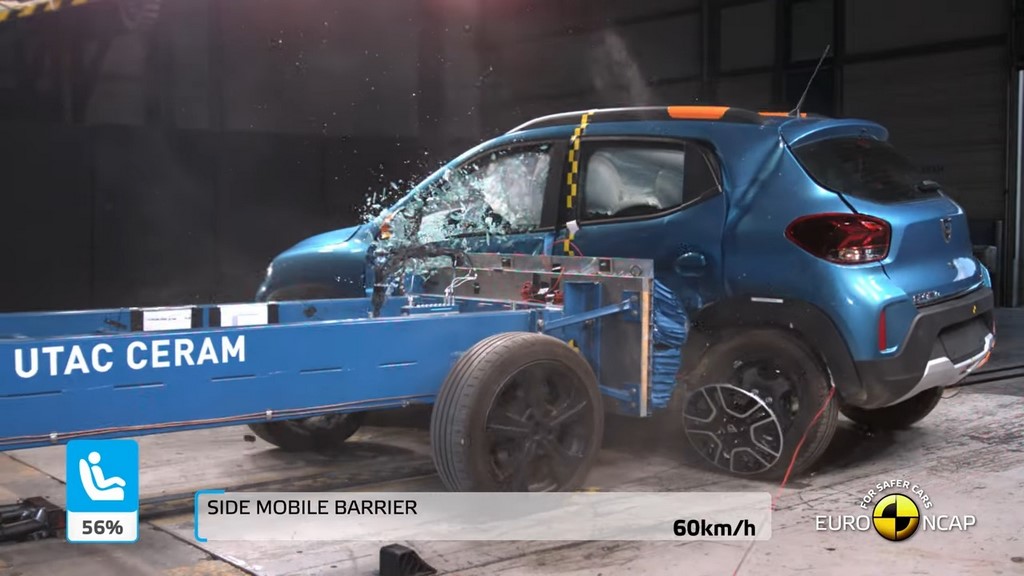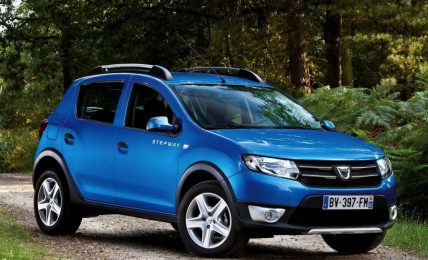The Dacia Spring Electric did not perform well in the recent Euro NCAP safety tests
Euro NCAP has awarded the 2021 Dacia Spring electric car a 1-star safety rating after conducting a series of assessments recently.
The rating applies to left-hand drive Dacia Spring models and the variant that was tested was the E2 Comfort Plus that came with a 33 kW (44.25 BHP) motor and weighed 970 kg.
As standard, the supermini comes with dual front and side airbags, seat belt reminder, load limiter and pretensioner, ISOFIX mounts in the back, AEB car-to-car and speed assistance, in Europe.

In the Adult Occupant Protection (AOP) tests, the car scored 18.9 points, 49 percent of the total points on offer. The front impact score was 6.1 of 16 points, lateral impact score was 10.6 of 16 points, while the rear impact rating was 2.8 of 4 points and finally, the car was awarded -0.5 of 2 points for rescue and extraction.
Although the passenger compartment of the Spring remained stable in the frontal offset test, readings of several parameters in the dummies’ legs were high and structures in the dashboard presented a risk of injury to occupants of different sizes and to those sitting in different positions.
Protection of the driver dummy’s chest and pelvis was rated as poor and the car did not perform well in the full-width barrier impact and side pole impact assessments.
The 2021 Dacia Spring Electric Euro NCAP score for Child Occupant Protection (COP) was 27.5 points or 56 percent of the total points on offer. The performance is based on 6- and 10-year-old child dummies.

In all, the car scored 17.5 out of 24 points for crash test performance, 4 of 13 points for safety features on offer and 6 of 12 points for CRS installation check.
According to Euro NCAP, in the frontal offset test, protection of the head and neck of the 6-year-old child was weak, while the neck of the 10-year-old dummy was marginally protected.
As for pedestrian safety, the car scored 21.3 points (39 percent) in all, while in the safety assist test, the electric car scored 5.2 points or 32 percent of the total points that can be scored.
The car does not come with a fatigue-detection system or lane assistance and the autonomous emergency braking (AEB) system showed marginal performance in tests of its reaction to other vehicles.




